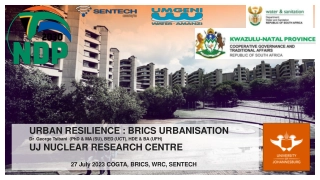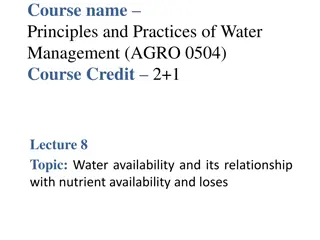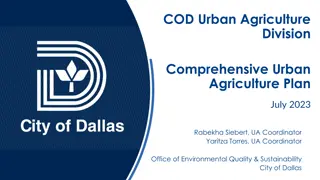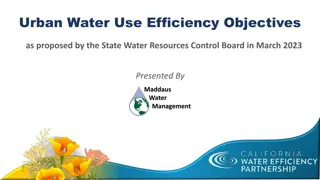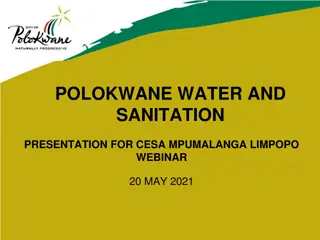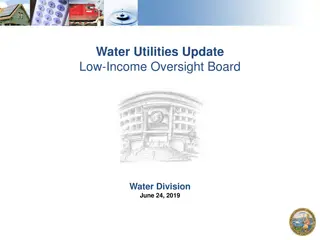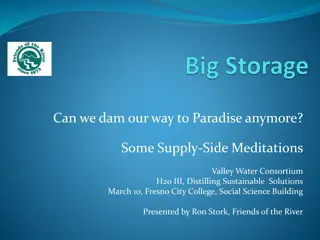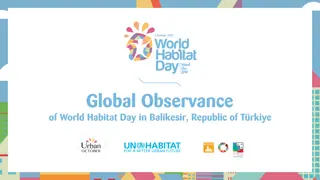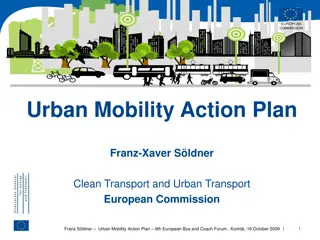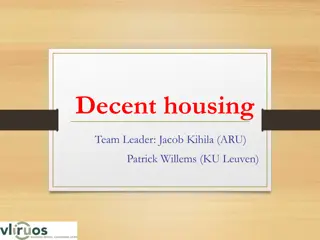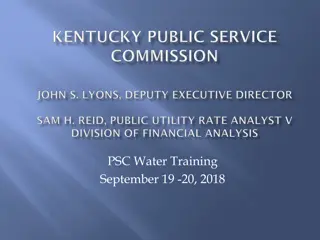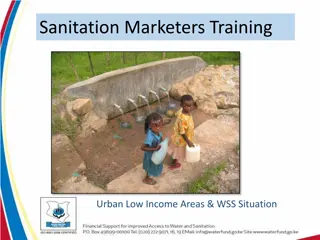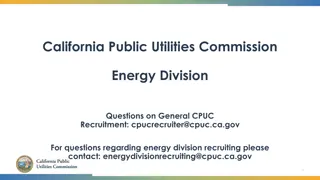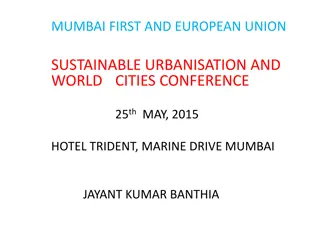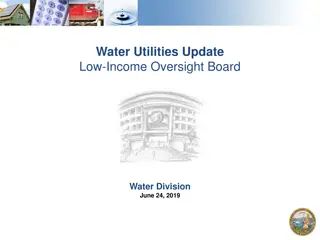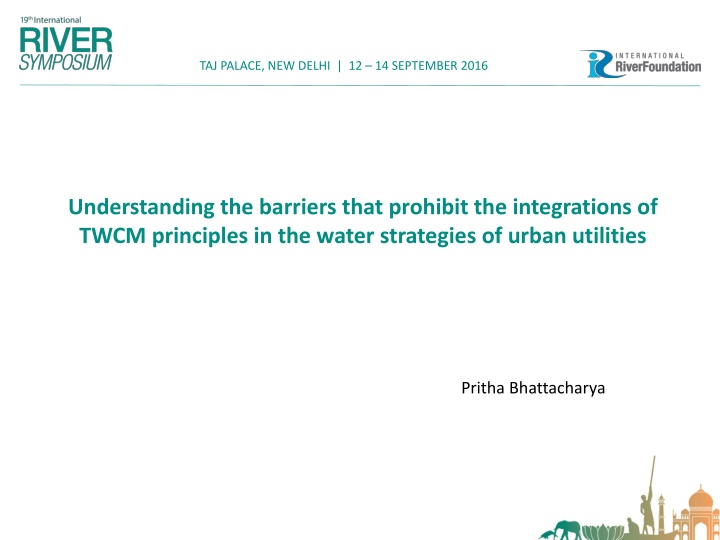
TWCM principles in the water strategies of urban utilities
Rapid urbanization has led to increased demands for water and sewage services in urban areas. The need for better environmental protection and sustainable water management is highlighted. Changes in normative, cognitive, and regulative drivers have shaped approaches like SUWM, IUWM, and TWCM to address these challenges effectively.
Download Presentation

Please find below an Image/Link to download the presentation.
The content on the website is provided AS IS for your information and personal use only. It may not be sold, licensed, or shared on other websites without obtaining consent from the author. If you encounter any issues during the download, it is possible that the publisher has removed the file from their server.
You are allowed to download the files provided on this website for personal or commercial use, subject to the condition that they are used lawfully. All files are the property of their respective owners.
The content on the website is provided AS IS for your information and personal use only. It may not be sold, licensed, or shared on other websites without obtaining consent from the author.
E N D
Presentation Transcript
TAJ PALACE, NEW DELHI | 12 14 SEPTEMBER 2016 Understanding the barriers that prohibit the integrations of TWCM principles in the water strategies of urban utilities Pritha Bhattacharya
TAJ PALACE, NEW DELHI | 12 14 SEPTEMBER 2016 Context Rapid pace of urbanization is a complex and an important socio-economic change of the century (Allen 2009) Higher demand for water and sewage services in urban areas, and is compounded by increased social demands for better environmental protection of waterways and livable areas in the urban space (WSAA 2014) http://www.urban-hub.com
TAJ PALACE, NEW DELHI | 12 14 SEPTEMBER 2016 Changes to the way people interact with the environment and manage natural resources. Normative Driver Change in normative driver/ societal value that demands livable urban areas and sustainable management of natural resources Cognitive Driver Driven the change in regulation of water resources for co- existence of centralized & decentralized systems with community and private sectors participation rather than a primitive top down engineering approach Regulative Driver (Brown et al. 2009)
TAJ PALACE, NEW DELHI | 12 14 SEPTEMBER 2016 Sustainable Urban Water Management Integrated Urban Water Management Total Water Cycle Management Customization of IWRM for urban water management has helped in the formulation of concepts like Sustainable Urban Water Management (SUWM), Integrated Urban Water Management (IUWM), Total Water Cycle Management (TWCM)
TAJ PALACE, NEW DELHI | 12 14 SEPTEMBER 2016 Total Water Cycle Management maintaining the natural water cycle and reducing any modification to water resources safeguarding that extraction of water from its source is within environmental limits promoting demand side management through encouraging minimum water use and loss and endorsing efficient water use and re-use exploring potential water supply sources like re- using of treated water, stormwater harvesting ensuring that the quality of water is preserved at all stages of water cycle (Brown et al. 2009)
TAJ PALACE, NEW DELHI | 12 14 SEPTEMBER 2016 Need for data/information Hydrological Meteorological Demographic Land use Environmental quality Data Organization's strategic direction Shareholder's & stakeholder's visons Growth trends Climatic trends Information Technological innovation National & international trends Community & stakeholder knowledge Opportunities for innovation Knowledge
TAJ PALACE, NEW DELHI | 12 14 SEPTEMBER 2016 Socio Institutional Barriers Fragmented responsibilities Poor Uncoordinated institutional frameworks collaboration between institutions Socio Institutional Barriers (Brown et. al., 2006)
TAJ PALACE, NEW DELHI | 12 14 SEPTEMBER 2016 Research Questions Primary RQ: What are the barriers that prohibit the integrations of TWCM principles in the water strategies of urban utilities especially of Brisbane? Secondary RQ: What are the barriers that impede the access of relevant data/information while developing strategies by urban utilities especially of Brisbane?
TAJ PALACE, NEW DELHI | 12 14 SEPTEMBER 2016 Process/Method Framework: Transition Management Framework Data collection: Semi structured interviews Method of data analysis: Thematic analysis
TAJ PALACE, NEW DELHI | 12 14 SEPTEMBER 2016 Outcome/ Lessons Learnt Consent on IWRM as a tool for sustainable development Siloism /Fragmentation of water management institutions Lack of capacity building on data collection and management Challenges regarding interoperability of data Lack of trust on the data collected
TAJ PALACE, NEW DELHI | 12 14 SEPTEMBER 2016 Transferrable Outcomes Open source of data Public funding for data collection Collaboration between organizations for data management
TAJ PALACE, NEW DELHI | 12 14 SEPTEMBER 2016 References Allen, A., 2009. Sustainable cities or sustainable urbanization? Journal of Sustainable Cities, pp.1 3. Brown, R.R., Keath, N. & Wong, T.H.F., 2009. Urban water management in cities: historical, current and future regimes. Water Science and Technology, 59(5), pp.847 855. Brown, R.R., Sharp, L. & Ashley, R.M., 2006. Implementation impediments to institutionalizing the practice of sustainable urban water management. Water Science and Technology, 54(6-7), pp.415 422. WSAA, 2014. The role of the urban water industry in contributing to liveability. , (March), pp.1 24.

